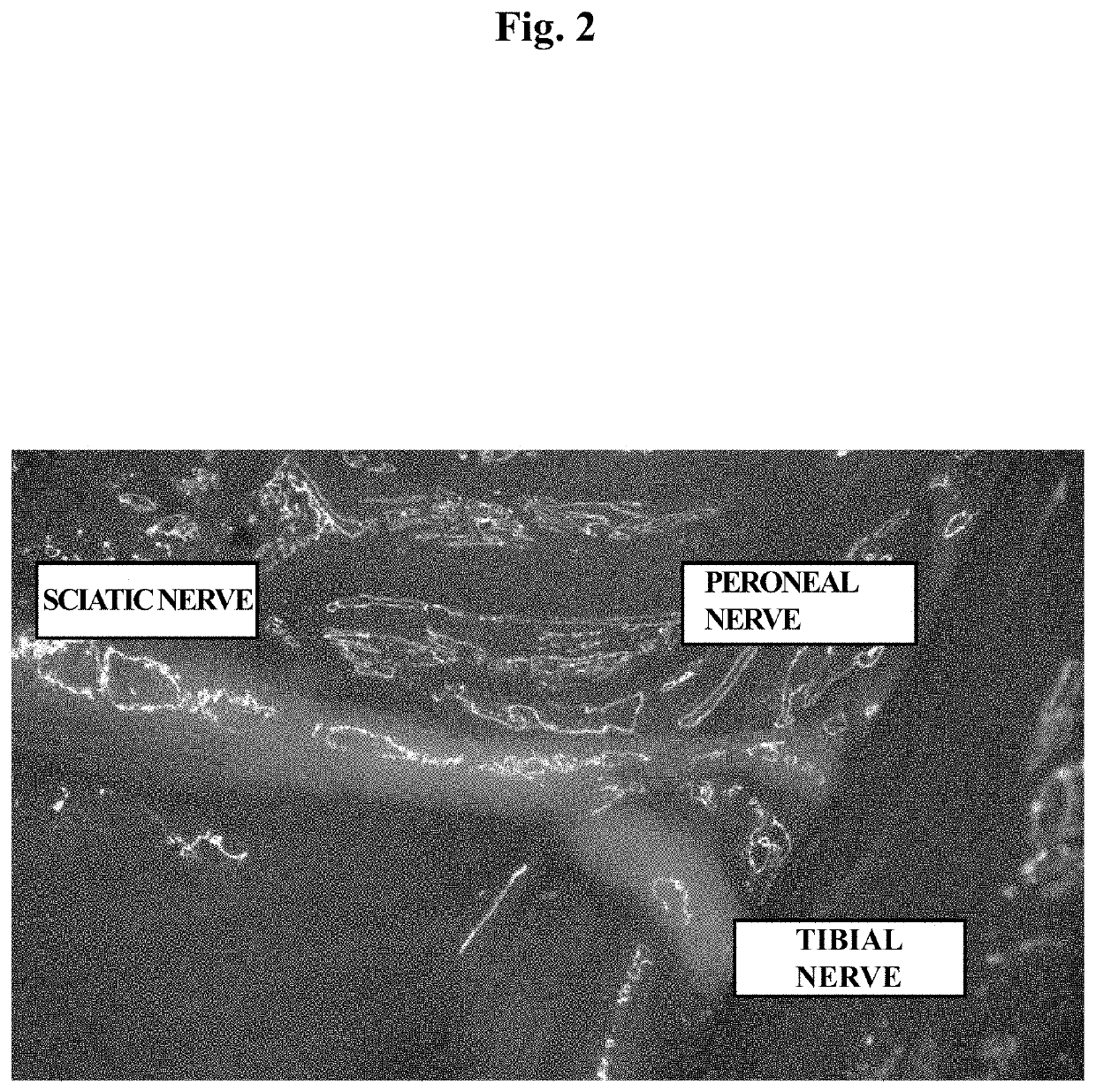Nerve regeneration-inducing material
a regeneration and inducing material technology, applied in the field of nerve regeneration inducing materials, can solve the problems of pain and numbness at the location of nerves, difficult to use nerbridges for nerve regeneration at locations with a large range of movement, and complex procedures, etc., to promote regeneration of damaged sites, superior nerve regeneration inducing effect, and wide range of clinical applications
- Summary
- Abstract
- Description
- Claims
- Application Information
AI Technical Summary
Benefits of technology
Problems solved by technology
Method used
Image
Examples
example 1
Production of Crosslinked Alginate and Evaluation of Properties
[0270]Crosslinked alginate in the form of a xerogel was produced using sodium alginate and (i) calcium chloride, (ii) mixture of calcium chloride and sodium chloride, or (iii) ethylenediamine, respectively, as a crosslinking agent followed by evaluating the properties thereof.
[0271]1-(1) Sodium Alginate
[0272]Six types of low endotoxin sodium alginate each having an endotoxin content of less than 50 EU / g (Sea Matrix (registered trademark), Mochida Pharmaceutical Co., Ltd.) were used for the sodium alginate.
[0273]The M / G ratios of the sodium alginate of samples A-1, A-2 and A-3 ranged from 0.4 to 1.8 and the M / G ratios of the sodium alginate of samples B-1, B-2 and B-3 ranged from 0.1 to 0.4.
[0274]Furthermore, the viscosities and weight average molecular weights of 1 w / w % aqueous solutions of each sodium alginate are shown in Table 1.
[0275]Viscosity of the sodium alginate was measured using a rotational viscometer (cone-p...
example 2
Evaluation of Nerve-Like Cell Survival Rates
[0304]The crosslinked alginate produced in Example 1 (approx. 1.0 cm×1.0 cm) was impregnated with 1 mL of PC12 cells (50,000 cells / mL). After adding nerve growth factor (NGF) (final concentration: 100 ng / mL) and culturing for 7 days (while adding 0.5 mL of medium on day 3), WST-8 reagent (Dojindo laboratories) was added at 150 μL / well followed by allowing to stand undisturbed for 3 hours at 37° C. 100 μL aliquots of the supernatant were dispensed into a 96-well plate followed by measuring absorbance at 450 nm using a plate reader (Tecan Group Ltd.).
[0305]Four types of crosslinked alginate were prepared consisting of two types of sample A-2 obtained by respectively crosslinking with (i) calcium chloride and (iii) ethylenediamine (respectively referred to as A-2Ca and A-2EDA), and two types of sample A-3 obtained by respectively crosslinking with (i) calcium chloride and (iii) ethylenediamine (respectively referred to as A-3Ca and A-3EDA). A...
example 3
Evaluation of Crosslinked Alginate Irradiated with Electron Beam
[0308]3-(1) Irradiation of Crosslinked Alginate with Electron Beam
[0309]Crosslinked alginates were prepared using low endotoxin sodium alginate samples A-2 and A-3 and using calcium chloride and sodium chloride as crosslinking agents (respectively referred to as A-2CaNa and A-3CaNa), or using ethylenediamine as crosslinking agent in accordance with Example 1-(4) (respectively referred to as A-2EDA and A-3EDA). The crosslinked alginates that used calcium chloride and sodium chloride as crosslinking agents were prepared by immersing plates filled with 3.15 mL aliquots of 1% aqueous sodium alginate solution in 25 mL of aqueous calcium-sodium crosslinking agent solution (calcium chloride anhydrate: 50 mM, sodium chloride: 300 mM) to induce gelation followed by washing and lyophilizing.
[0310]Each of the crosslinked alginates were irradiated with an electron beam at 20 kGy, 40 kGy and 60 kGy, respectively.
[0311]The Dynamitron...
PUM
| Property | Measurement | Unit |
|---|---|---|
| speed | aaaaa | aaaaa |
| thickness | aaaaa | aaaaa |
| thickness | aaaaa | aaaaa |
Abstract
Description
Claims
Application Information
 Login to View More
Login to View More - R&D
- Intellectual Property
- Life Sciences
- Materials
- Tech Scout
- Unparalleled Data Quality
- Higher Quality Content
- 60% Fewer Hallucinations
Browse by: Latest US Patents, China's latest patents, Technical Efficacy Thesaurus, Application Domain, Technology Topic, Popular Technical Reports.
© 2025 PatSnap. All rights reserved.Legal|Privacy policy|Modern Slavery Act Transparency Statement|Sitemap|About US| Contact US: help@patsnap.com



